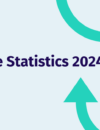
Our population is ageing. In the UK, according to the Office for National Statistics, “the population aged 65 years and over is growing faster than other age groups […] By 2050, it is projected that one in four people in the UK will be aged 65 years and over – an increase from approximately one in five in 2019.”
You would think that as communities of older people grow larger, acceptance and inclusivity of these age groups would increase at the same exponential rate; but that sadly isn’t the case.
Ageism is still a huge problem, and it can take many forms: from receiving lower-quality customer service and being refused travel insurance, to failing to receive a medical referral from a doctor, and even missing out on a job.
In March 2020, the Guardian reported that the UK’s ageism was reaching a critical point after the publication of a paper by the Centre for Ageing Better:
“Older people are mostly seen as incompetent, hostile or a burden on others, according to a review of the evidence that found they are subject to a litany of damaging stereotypes […] Negative attitudes are rife in the workplace, in health and social care and in the media, with women and people from black and minority ethnic groups facing a “double jeopardy” of discrimination.”
How older generations are portrayed in the media can hugely influence how they are treated in everyday life. Stereotypes and even caricatures of older generations can change how people perceive their elders and may even instil subconscious negative bias in people, without them even realising.
As mentioned, ageism can be found within the working world. In fact, like most areas of discrimination, it’s more common than you’d think. Despite the ONS stating that “higher numbers of people aged 65 years and over are in work [in 2019] than ever before,” the stigma of age can prevent people from getting hired, retained, promoted or upskilled.
The same report by the Centre for Ageing Better found that “older workers are seen as having lower levels of performance, less ability to learn and being more costly than younger workers.”
Older workers are therefore more likely to be viewed as somewhat disposable. For example, they may be targeted in redundancy programmes in favour of keeping younger colleagues, and it’s been proven that if age indicators are removed from the application process, older workers are more likely to be hired.
Lindsay Cook writes in the Financial Times:
“Nearly half of those over 50 thought that their age would disadvantage them if they applied for a new job and a third thought there were fewer opportunities for training and progression with their existing company.”
This shows that the narrative around fresh-faced talent is harming some of the most skilled people in the team.
Moreover, there’s evidence to prove that ageism in work impacts women earlier. Margye Solomon writes in Forbes: “Ageism in the workplace does affect both men and women. Here comes the BUT: not equally nor at the same age.” She points to research from David Neumark, Distinguished Professor of Economics and Co-Director, Center for Population, Inequality, and Policy, who states that while men experience ageism from 45, women are subject to it from just 40. While both ages seem far too young to even be worrying about ageism, it is the gap between supposed ‘sell-by dates’ that adds even more concern.
Margye adds, poignantly: “Does discrimination against women really boil down to our physical appearance? When we are younger and “better-looking,” we fight sexism. When we are older and not as attractive, we fight ageism.”
Indeed, as with all discrimination, there are blurred edges, and when one type of bias or bigotry is present, another is surely never far behind.
How to fight ageism at work
As our population gets older, and the number of older workers in our organisations increases, changing our attitudes towards age needs to happen quickly. Indeed, as Lindsay Cook points out: “as the pensions system becomes less generous, another reality of living for longer is that we will need to work for longer.”
It’s time to change the perceptions of older colleagues and employees, and in turn make them feel valued, welcomed, and supported while protecting them from discrimination in the workplace.
Here are some ideas to ensure your office or work environment is free from ageism.
- Recognise the value your older employees bring with them. Many will have extensive experience in both their field of work and beyond; this can be a fantastic resource. Involve them in decision-making, set up mentoring or training sessions to share ideas and learnings, and provide plenty of opportunities for them to showcase what they can do. According to PWC, “harnessing older people in the workforce actually boosts a country’s GDP.”
- Ensure any ED&I training in your workplace includes ageism, and make it compulsory for all staff to take part. This is very important for all areas of ED&I.
- Consider removing any age identifiers in recruitment processes to ensure bias is avoided.
- Make sure opportunities, such as promotions and bonuses, are truly open to all – not just new or up-and-coming recruits.
- Adapt ways of working. Consider mobility and accessibility in office spaces, flexible hours and options to work from home to make the working day easier for all needs. This will not only benefit older employees but also team members with disabilities or extra needs. Flexible working, in general, is beneficial for everyone’s wellbeing.
- If redundancies and restructures occur, make it clear with your team that decisions will not be made based on age, or any other protected characteristic.
- Reward your team based on their performance, not based on their time with the organisation.
- Put in place policies and enforce them, just as you would for any other protected characteristic, to ensure change actually happens.
It’s time to prove that age is just a number when it comes to our careers, and it’s never ‘too late’ to achieve great things or find success in the world of work and beyond.





